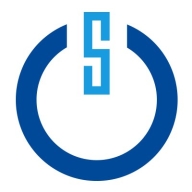

Splunk SOAR and CRITICALSTART compete in the cybersecurity orchestration, automation, and response market. Splunk SOAR leads with extensive integrations and sophisticated feature sets, whereas CRITICALSTART is notable for its robust threat detection and response capabilities, making it highly valued for its perceived value and ease of use.
Features: Splunk SOAR offers automated workflows, customizable playbooks, and advanced integration capabilities, ideal for sophisticated threat management. CRITICALSTART excels with managed detection and response services, advanced threat analytics, and 24/7 security monitoring. While Splunk SOAR supports complex integration, CRITICALSTART focuses on effective real-time threat detection.
Room for Improvement: Splunk SOAR can improve in deployment complexity, user training, and simplifying integration processes. CRITICALSTART should focus on reducing upfront costs, enhancing mobile app features, and improving the intuitiveness of its user interface. Both solutions could enhance predictive analytics capabilities to match evolving cybersecurity threats.
Ease of Deployment and Customer Service: CRITICALSTART offers a streamlined deployment process with quick onboarding and continuous customer support. Splunk SOAR requires detailed configuration to optimize its powerful tools, demanding more deployment time compared to CRITICALSTART’s seamless setup and supportive customer service approach.
Pricing and ROI: Splunk SOAR requires substantial setup investment for customization and scaling, promising a strong long-term ROI for complex environments. CRITICALSTART has higher upfront costs but offers immediate value in threat mitigation and operational efficiency. Buyers often find CRITICALSTART’s cost appealing due to its tangible returns, while Splunk SOAR provides robust ROI potential over time for larger enterprises.

The cybersecurity landscape is growing more complex by the day with the arrival of new threats and new tools supposedly designed for combating them. The problem is it’s all creating more noise and confusion for security professionals to sort through.
CRITICALSTART is the only MDR provider committed to eliminating acceptable risk and leaving nothing to chance. They believe that companies should never have to settle for “good enough.” Their award-winning portfolio includes end-to-end Professional Services and Managed Detection and Response (MDR). CRITICALSTART MDR puts a stop to alert fatigue by leveraging the Zero Trust Analytics Platform (ZTAP) plus the industry-leading Trusted Behavior Registry, which eliminates false positives at scale by resolving known-good behaviors. Driven by 24x7x365 human-led, end-to-end monitoring, investigation and remediation of alerts, their on-the-go threat detection and response capabilities are enabled via a fully interactive MOBILESOC app.
Splunk SOAR offers features like automation and orchestration of manual tasks, speeding up work, detection and response to advanced and emerging threats.
Automate manual tasks. Address every alert, every day. Establish repeatable procedures that allow security analysts to stop being reactive and focus on mission-critical objectives to protect your business.
Orchestrate and automate repetitive tasks, investigation and response to increase efficiency and productivity, and do more with the people you already have. Make a team of three feel like a team of 10.
Work faster with Splunk SOAR. Respond to threats in seconds. Lower your mean time to respond (MTTR) by automating security tasks and workflows across all of your security tools.
Take advantage of Splunk Enterprise Security and Splunk SOAR joining forces to provide a seamless and intuitive SecOps platform to prevent, detect and respond to advanced and emerging threats.
We monitor all Security Orchestration Automation and Response (SOAR) reviews to prevent fraudulent reviews and keep review quality high. We do not post reviews by company employees or direct competitors. We validate each review for authenticity via cross-reference with LinkedIn, and personal follow-up with the reviewer when necessary.